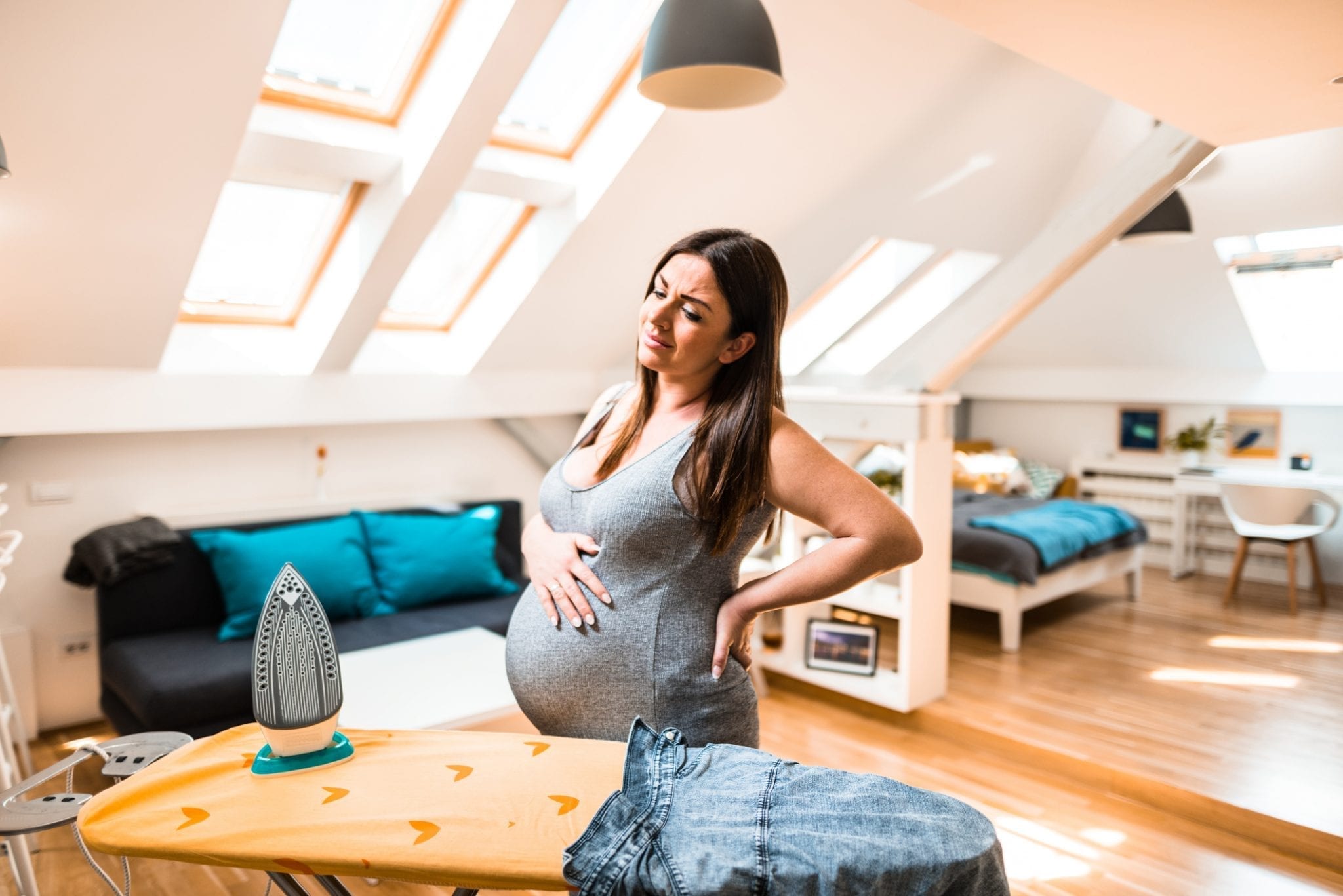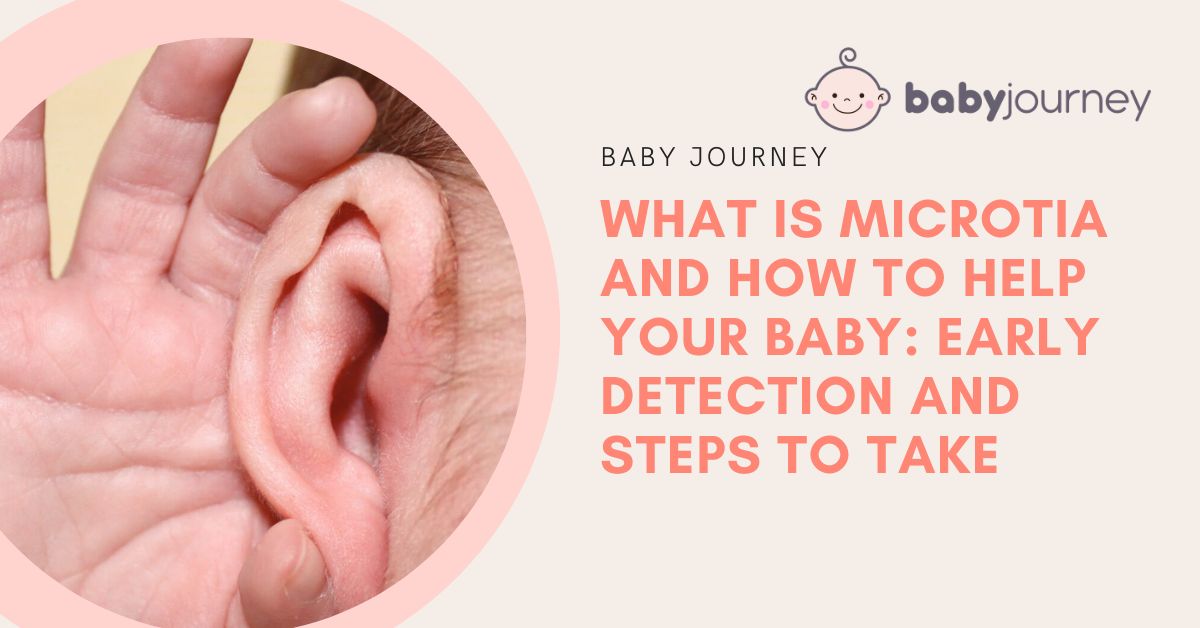Pregnancy presents many changes in the female body from head to toe, including bigger feet and totally different taste buds. The uterus itself will expand up to 1,000 times its original size during a full-term pregnancy. That’s an avocado turning into a watermelon! So, everything around the uterus will either need to enlarge or stretch to help support the growing uterus. It’s a tough job. This is why women experience round ligament pain during pregnancy.1,2,3,4 Ligaments inside the body are designed to stretch and give a little, like a super-strength rubber band. In pregnancy, this usually happens in the second trimester as the baby and uterus grow larger. This is generally when round ligament pain can appear.1,3
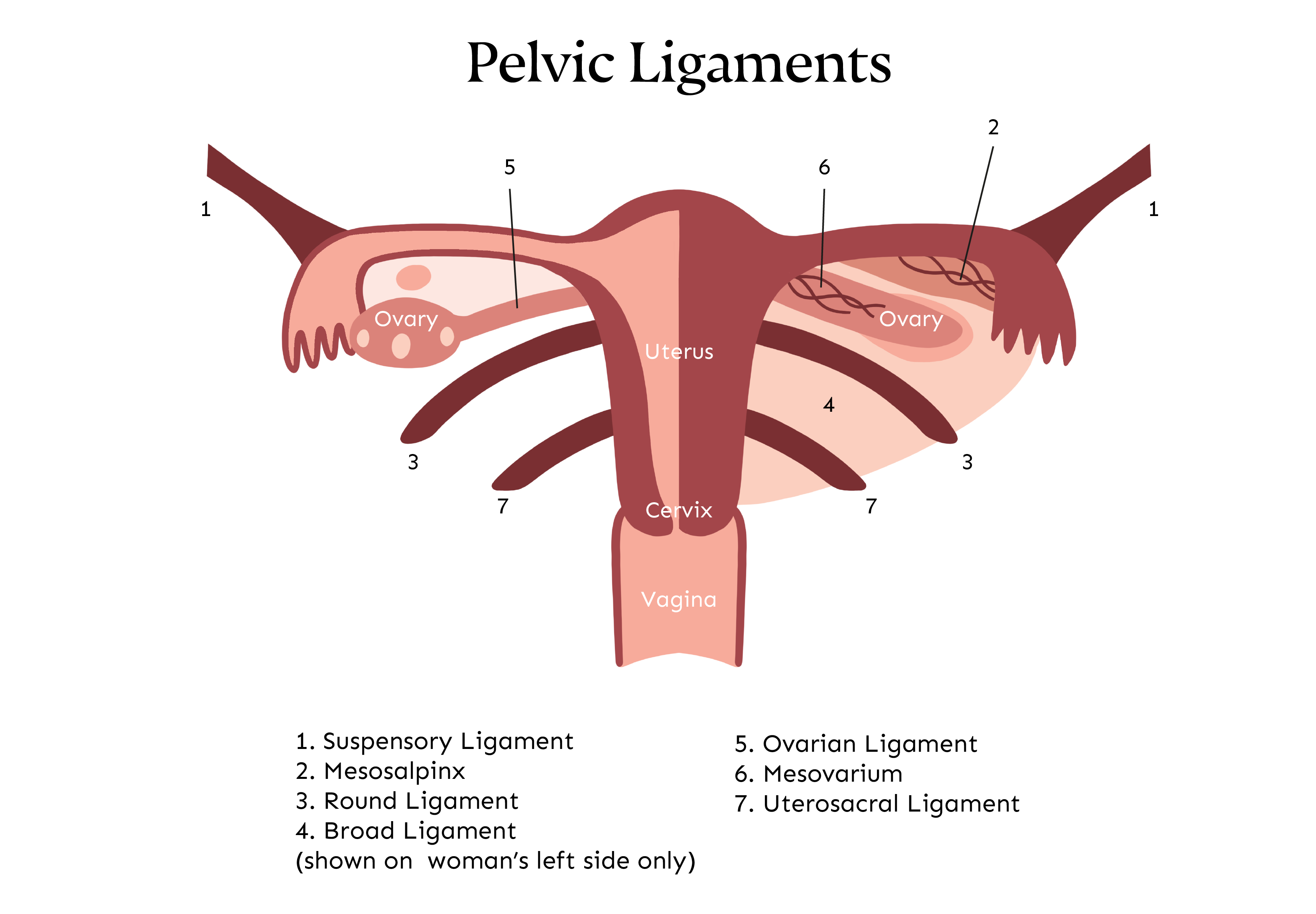
Ligaments link things together, and several ligaments hold the uterus in place inside the abdomen, like the way a spider web is held in the corner or a doorway. The spider web is intricate and strong and has many elaborate parts, but it might be attached to the actual corner in only three to five places. The uterus is similar. It has eight different attachments, or ligaments, to other parts inside the body (four on each side), but it’s still somewhat free-floating. As the baby and uterus grow, the connecting ligaments start to stretch and get longer. This can lead to round ligament pain.3,5,6
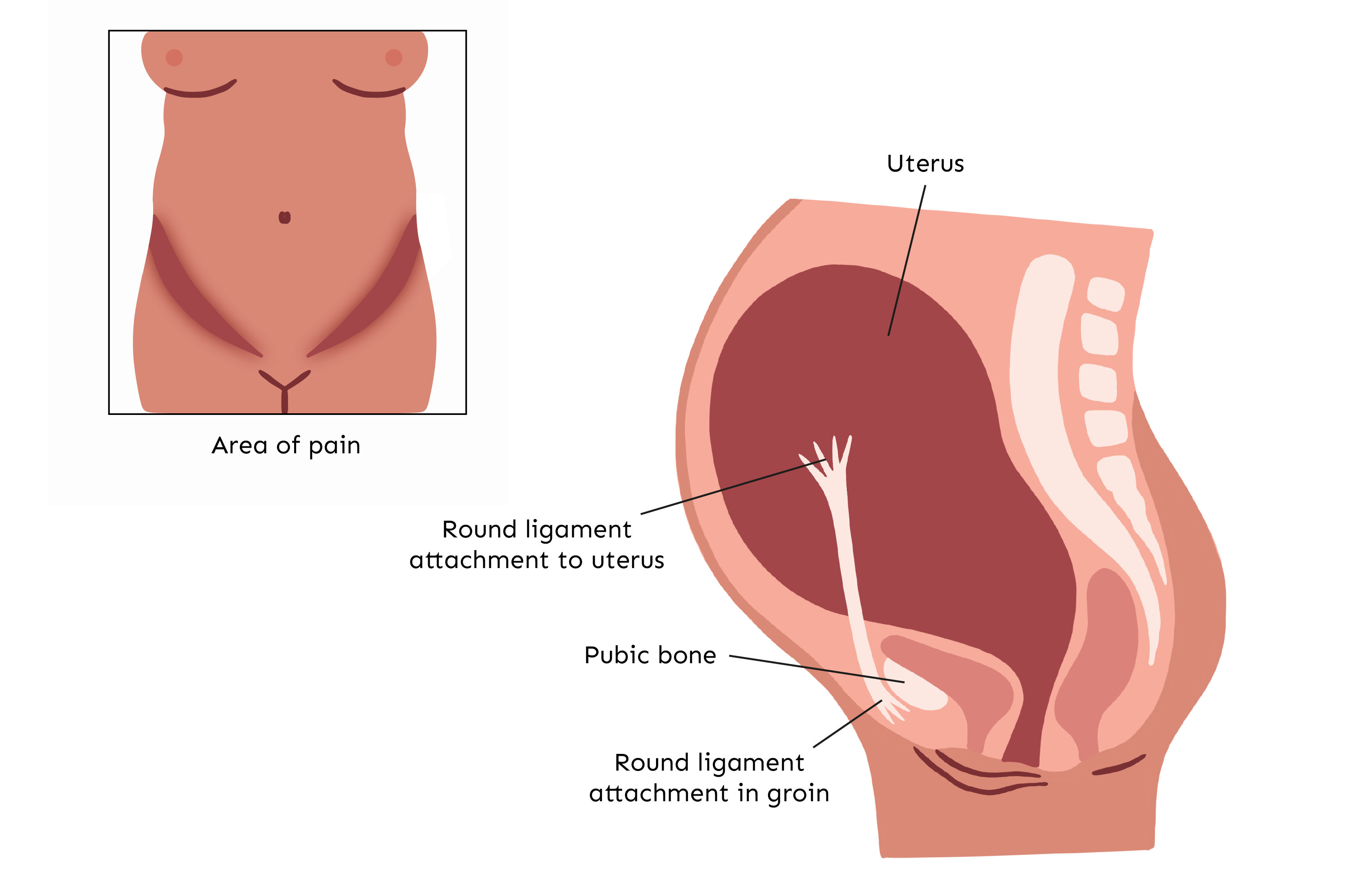
Round ligament pain comes from the uterine ligaments having spasms as they stretch to accommodate the enlarging uterus during pregnancy. (See the above picture.) These pains or spasms can be quite sharp and intense. It’s more likely to happen during physical activity, as the uterus moves up, down, or side to side with body movements. But it can happen any time out of the blue.2,6,7
What else is a painful spasm you might be more familiar with? A Charley horse in the leg. This comes from a muscle spasm, while the round ligament pain is from a ligament. Unfortunately, they both produce the same results — extreme, sharp, piercing pain that catches you off guard and makes you wish for immediate relief.10
As the uterine ligaments stretch and thicken along with the increased size of the baby and uterus, they become less flexible and tighter, like a stretched-out rubber band. When they’re tight, certain movements or positions of the mother can cause those ligaments to spasm. This pulls on the local nerve fibers and causes a sharp, knife-like, severe pain.2,7,11
Common movements that can trigger round ligament pain during pregnancy include standing up too fast or turning to the side quickly, sneezing or coughing, or making any sudden movements in general. Even laughing hard can cause a spasm! Also, turning over in bed too rapidly can shift the weight of the uterus.2,7,11
The first time you feel round ligament pain in your pregnancy, it may scare you into thinking there’s a problem because the pain can be so intense. You can relax once you and your provider determine it’s round ligament pain.
Although there’s nothing wrong with your pregnancy, the pain is still a mighty force to deal with. Round ligament pain usually leaves as fast as it appears, out of nowhere. It’s a sharp, stabbing pain that can take your breath away. The most common location of round ligament pain is on the right side of the hips and lower belly, but it can be felt on both sides. This pain can also shoot down into the groin area in pregnancy. Many women don’t realize the pain in their groin during pregnancy might be round ligament pain.2,6,11
It can happen at any time during pregnancy. Still, round ligament pain more commonly starts in the second trimester, months four through six (or 13 to 28 weeks). At this point in the pregnancy, you’ll begin to show more and realize your balance and center of gravity are changing. All these things are part of a normal pregnancy, including, unfortunately, round ligament pain.7,8,11
Typically, round ligament pain starts in the second trimester and lasts through the rest of the pregnancy. It’s usually not a constant pain, just one that comes and goes. It’s often a fleeting pain that hits quickly like lightning and immediately recedes. Other times, it can be intermittent, or off and on. Some women experience round ligament pain throughout their pregnancy, while others hardly experience it at all.2,7,8,11
If you’re consistently having round ligament pain, there are several things you can do to alleviate the pain:2,6,7,8,9,11
First, try to avoid making any sudden movements. Stand still and bend slightly at your hips if you feel a sneeze, cough, or big laugh coming. This will protect the round ligament from being pulled. When working or doing chores at home, make slower, more deliberate movements and change positions slowly.
Do Yoga and Stretches
Stretching exercises and yoga are great ways to help prevent and relieve round ligament pain. Make sure you’re doing the specific stretches for round ligament pain and prenatal yoga. We still need to make sure we’re protecting you and the baby. Your Obstetrics provider (OB) can give you information about the stretches and yoga.
Applying heat to the round ligament pain location is another way to help soothe it. You can use a heating pad or a warm bath. Your provider may also instruct you to use over-the-counter pain medication (usually Acetaminophen or Tylenol). However, you must work closely with your provider so they’re aware of any medication you’re using.
Maternity belts are lower back and abdominal support devices for pregnant women. They can also help keep your round ligaments from stretching too far. Follow your provider’s instructions on how to use a maternity belt properly.
One of the best treatments for round ligament pain during pregnancy is just plain old rest. Your body is a highly efficient manufacturer producing a baby. Rest is always needed!
If you feel any sharp pains during pregnancy and are unsure where they’re coming from, you should contact your provider. Even when you’re not pregnant, abdominal pain can be a symptom of many different serious medical conditions and shouldn’t be ignored. Throughout your pregnancy, you’ll become familiar with your body’s changes and how it communicates with you. Once you’ve described your pain symptoms to your provider and have been diagnosed with round ligament pain, you can follow their recommendations for how to manage the pain.11
There are some signs and symptoms that could indicate more of a complication with the pregnancy. If you see any of these in conjunction with abdominal pain, contact your provider immediately:2,11
- Any new or different vaginal discharge, including blood
- Lower back pain or pressure after 30 weeks of gestation
- Consistent contractions that aren’t Braxton Hicks contractions
- Signs of an infection (fever, chills, nausea, or vomiting that isn’t related to morning sickness)
- Feeling dizzy or lightheaded
- Difficulty walking due to severe pain
- Extreme pain that persists
- Pain when urinating
- Abdominal cramping and vaginal bleeding together
Round ligament pain is a normal part of pregnancy for many women. It can cause severe pain and discomfort, but you can also manage it easily in most cases. It’s essential to get correctly diagnosed with round ligament pain by communicating with your OB provider. Then, you can take steps to understand what specifically triggers your pain, how to avoid those triggers, and ways to relieve the pain without hurting you or your baby.

 PARENTING TIPS
PARENTING TIPS







 PREGNANCY
PREGNANCY








 BABY CARE
BABY CARE








 TODDLERS
TODDLERS








 TEENS
TEENS


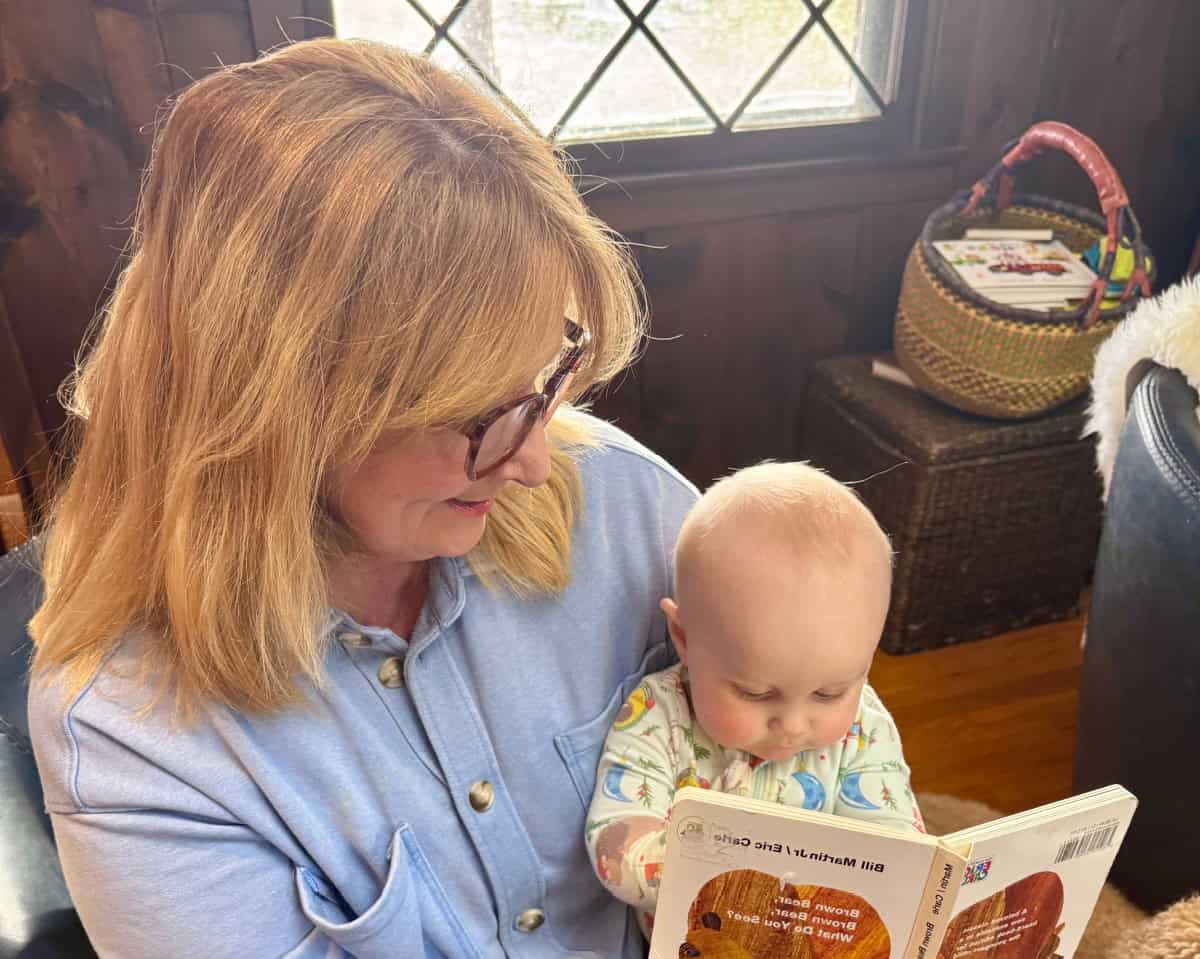





 HEALTH CARE
HEALTH CARE






 ACTIVITIES & CRAFTS
ACTIVITIES & CRAFTS








 CONTACT
CONTACT ABOUT
ABOUT